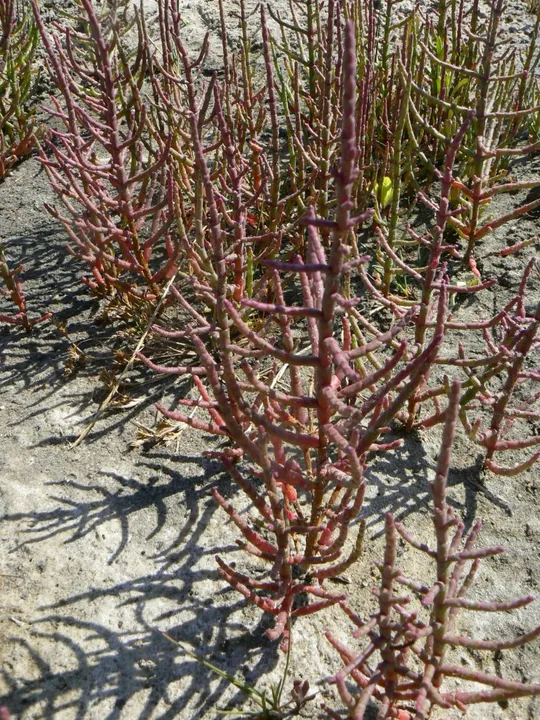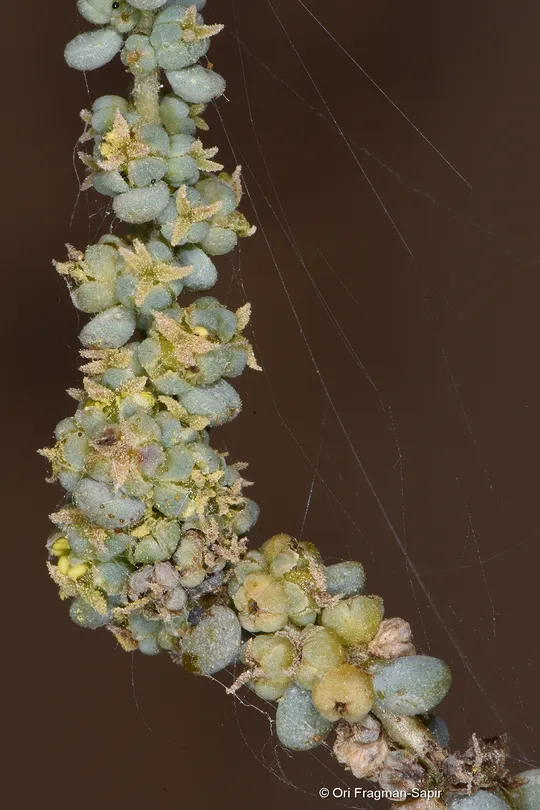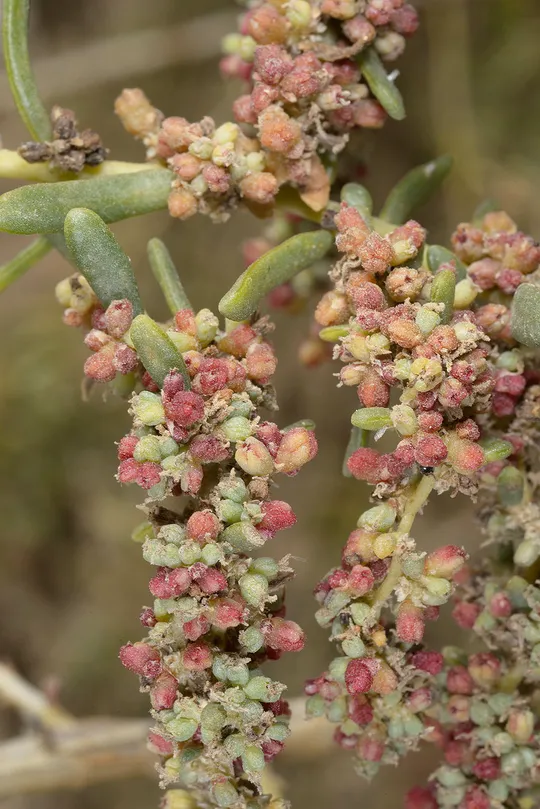Perennial Glasswort, Chickenclaws
Sarcocornia perennis
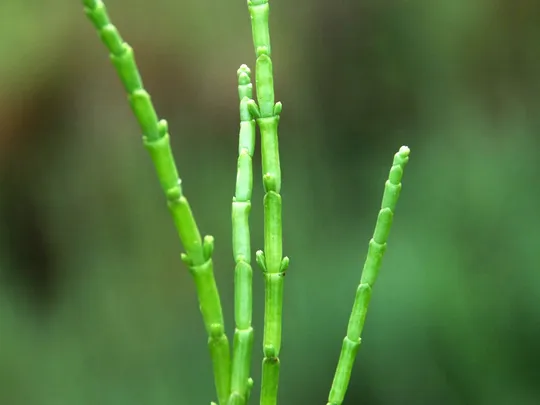
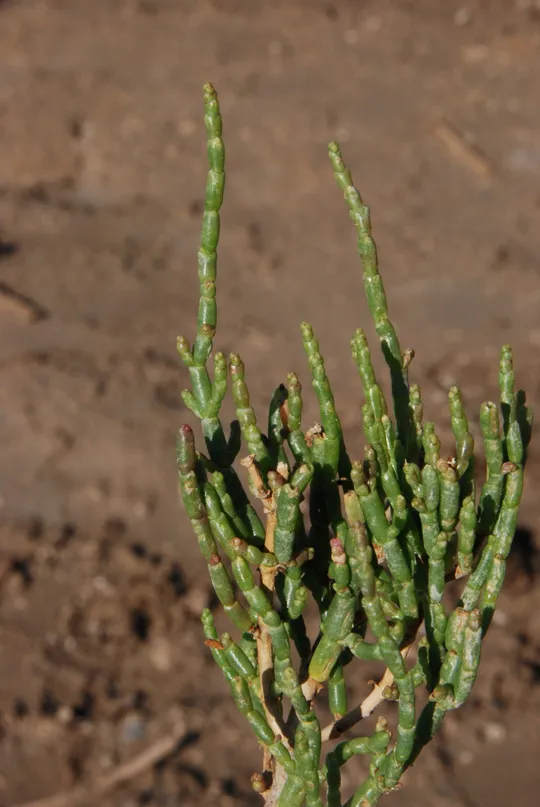
Sarcocornia
perennis grows in five regions in Israel: the Acre Valley,
Carmel Coast, Kinarot Valley (upper valley), Jordan Valley (lower valley) and
in the Dead Sea region. Twelve sites are known and it is extinct in nine. In
the Acre Valley S. perennis survived only
in Wadi Na'aman and disappeared from the Kishon area. On the Carmel Coast it
survived in the Taninim Stream and the HaBonim Beach-Atlit. In the upper Jordan
Valley it survived at three sites and is extinct from Bet She’an; in the lower Jordan
Valley it is found in Wadi Malaha and in the Dead Sea region it is found at Enot
Tsukim (En Feshha). In the Sharon S. perennis
is extinct from the Hadera region.
According to
Danin (2004) the plant is common only in the Acre Valley and on the Carmel Coast
(HaBonim) and is noted in Herbarium sheets only from the Acre Valley. There is
data in the literature from the Sharon, Bet She’an Valley and the Jordan Valley
as well, but it is not supported by herbarium data sheets. These data suggest
that the plant may be in fact extinct from almost all the regions listed above,
except maybe the Acre Salt Marsh. The permanence of the number of sites and the
rates of extinction are directly related to the ability and consistency of the identification
and distinction in the field between S. perennis
and the closely related species S. fruticosa.
Moist salt marshes; Sarcocornia perennis grows both in lagoons and in marshes
formed in river estuaries on the Mediterranean Sea, as well as in inland salt
marshes along the rift valley and the edges of springs that form saline humid
habitats for many months in the year.
There are 15
species in the genus Sarcocornia
whose distribution is cosmopolitan. They are all dwarf shrubs that have jointed stems and grow in salt marshes
and on saline wetland edges. The closest genus to it is Arthrocnemum. The entire Arthrocnemum group has androgynous flowers,
but the stamens mature before the female sexual organs, thus partially
prevented self-pollination. Unlike Arthrocnemum, the Sarcocornia seed has no endosperm and its
flowers that emerge from the stem nodes are very dense compared to those of Arthrocnemum. A good field character to
distinguish between the two species is the stem color – grayish-blueish in Arthrocnemum versus light green and/or greenish-reddish
in Sarcocornia. The genera Sarcocornia and Arthrocnemum include species that have both many
common and contrasting features and were once combined in a single genus.
·
The ambiguity in
differentiating
between Sarcocornia perennis and S. fruticosa makes it difficult to clearly assess the change trends
in some of the sites.
·
S. perennis
grows in small patches in groups and defining the individual plants is
difficult because of its vegetative propagation.
·
The coastal salt
marsh habitat is on the verge of extinction; its reduction and disappearance in
many places are responsible for the decrease in the number of sites (assuming
the plant was correctly identified).
·
S. perennis
is protected in the Dor-HaBonim Beach, Wadi Malaha and Enot Tsukim (Ein Fashha)
nature reserves (again assuming the plant was correctly identified).
·
The plant is
common on coastal and desert salt marshes throughout the world, and not
globally endangered, although the effect on beaches may damage this species in
other countries as well.
The first stage
in any management plan is the distinction between the Sarcocornia species. Once
they have been identified with certainty new surveys should be conducted at all
the sites from where the plant was previously recorded (see above the distribution
in Israel). Following such surveys it will be possible to obtain a reliable
status assessment of the sites. Steps should be taken to declare the Na'aman
Estuary a nature reserve, an important site in Israel for its coastal salt
marshes and the only site where the presence of S. perennis
has been confirmed with certainty.
Sarcocornia
perennis grows in desert and coastal salt marshes around the
Mediterranean Basin from Western Asia and to the Atlantic coast of Western
Europe. In Egypt it grows in the Sinai and on the beaches of Alexandria to the
Libyan border. S. perennis is absent from
the shores of Cyprus, Syria, Lebanon and Turkey.
Sarcocornia perennis is small creeping dwarf shrub of wet salt marshes near the beach and the desert, a habitat that is rapidly disappearing. There are difficulties in distinguishing between it and S. fruticosa and therefore the number of its sites in Israel is uncertain. It may have survived only on one site.
Current Occupancy Map
| 1000 squre meter pixel | 5000 squre meter pixel | 10000 squre meter pixel | |
|---|---|---|---|
| number of observations | 0 | 0 | 0 |
| in total pixels | 0 | 0 | 0 |
| Family | Chenopodiaceae |
| Classification | On the endangered species list |
| Ecosystem | Mediterranean |
| Chorotype | Mediterranean (Euro – Siberian) |
| Conservation Site | Na'aman estuary salt flats |
| Rarity |
1
4
6
|
|---|---|
| Vulnerability |
0
4
4
|
| Attractiveness |
0
0
4
|
| Endemism |
0
0
4
|
| Red number |
1
4.2
10
|
| Peripherality | 0 |
| IUCN category | DD EW EX LC CR EN VU NT |
| Threat Definition according to the red book | Endangered |
 Based on:
Based on:
